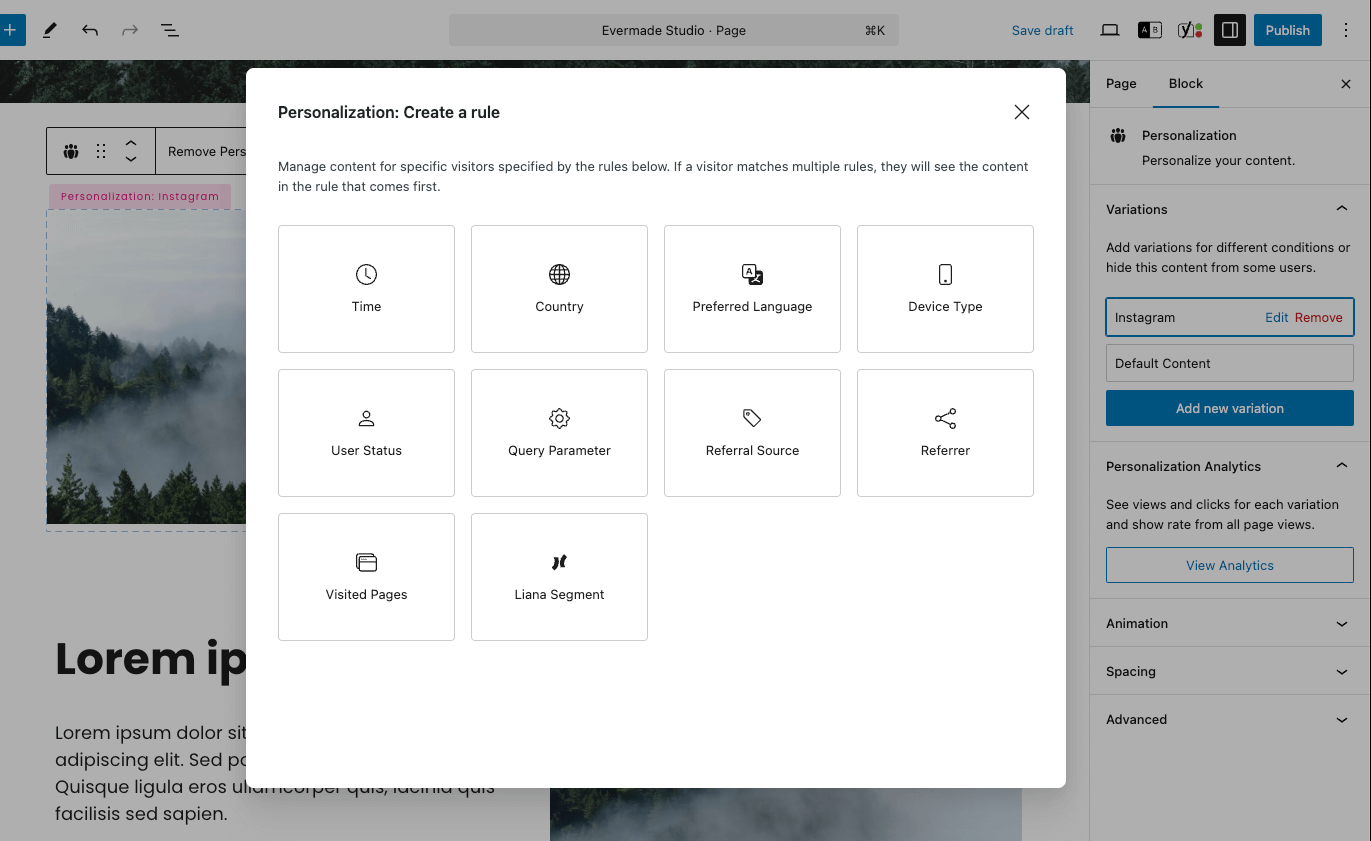Why WordPress hasn’t been the Enterprise default — And why that’s finally changing
WordPress powers more than 43% of the internet, yet many enterprises still hesitate to use it as their primary digital platform. It’s everywhere; from internal portals to campaign microsites, but rarely positioned at the heart of large-scale digital ecosystems. That disconnect is starting to fade. The tide is turning.
Rethinking WordPress at Scale
For much of its history, WordPress was seen as a tool for blogs and small businesses. It was rarely shortlisted for enterprise CMS decisions. Meanwhile, digital experience platforms (DXPs) like Adobe Experience Manager, Sitecore, and Drupal gained traction by promising all-in-one solutions: content management, personalization, analytics, marketing automation, and more.
Their rise wasn’t accidental. Enterprises needed to bring systems together, and DXPs offered exactly that – a suite of integrated tools sold by a single vendor with centralized governance, support, and enterprise-grade SLAs. For many IT and marketing teams, the pitch was compelling: buy one platform and you get everything.
Today, DXPs still dominate the enterprise landscape. Adobe Experience Manager, for instance, leads in the primary CMS category among large organizations, especially in regulated industries. But the all-in-one promise comes at a steep cost: high licensing fees, heavy implementations, and bundled features that often go unused.
The Enterprise Math Is Starting to Make Sense
For years, the core value proposition of DXPs has been integration. Need your CMS to talk to your CRM, ERP, and marketing automation tools? Buy the suite, get the connections. We get it.
What’s changing is the understanding of total cost of ownership (TCO). A global study of over 1,700 digital leaders shows that WordPress-based solutions consistently outperform proprietary CMSs in cost efficiency – by A LOT:
- WordPress delivers up to 44% lower TCO than other platforms like Sitecore, Adobe, and Drupal.
- Development and agency costs are 15–30% lower, thanks to a more accessible developer ecosystem.
- Hosting and infrastructure costs with leading WordPress providers are up to 64% more cost-effective compared to major competitors.
The reasons are straightforward: no licensing fees, no mandatory suite buy-in, and no vendor lock-in. Enterprises can allocate more budget toward innovation and continuous improvement rather than maintaining expensive licensing contracts.
And unlike DXPs that often sunset tools (remember Magento 1 or Drupal 7 end of life panic moments for example?) or shift focus due to internal product cycles, WordPress is built with deep backwards compatibility in mind. The pace of innovation is high, but it’s additive, not disruptive.
Open vs. Closed: What Today’s Teams Actually Need
Modern enterprises no longer want monoliths. They want platforms that are composable, flexible, and built around their actual needs. DXPs provide depth and structure, but they also dictate the architecture. WordPress, by contrast, adapts to your systems. It integrates easily with analytics platforms, personalization tools, CRMs, and marketing suites. According to the 2024 State of Enterprise WordPress survey:
- Over 96% of enterprise users have integrated WordPress with their core business systems, from customer data platforms to editorial workflows.
- 40% of organizations have 50+ users actively managing content in WordPress.
- 55% now use WordPress as their sole CMS or DXP, up 17% from the previous year.
The takeaway? Extensibility is no longer a differentiator reserved for DXPs. WordPress is already doing the job. And it’s doing it without the licensing bloat, rigid interfaces, or long implementation timelines. This isn’t a niche tool hidden away in marketing – it’s the digital workspace for large, cross-functional teams.
If WordPress already supports your teams and integrates with your tools, what’s left for a DXP to justify?
When WordPress Moves From Side Project to Strategic Platform
In many cases, WordPress enters an organization quietly – via a blog, a campaign site, a microsite for a new market. Then something shifts.
In WordCamp Europe 2025, the biggest WordPress event on the continent, we witnessed firsthand how Jon Ang and Tom Willmot presented a case study titled “Banking on WordPress: Inside a FTSE 50 Bank’s Global Platform.” In this project, they extrapolated how Standard Chartered Bank, a multinational bank operating in over 50 markets, replatformed from a proprietary CMS to WordPress, evolving their digital strategy along the way.

The story is as old as time; their legacy CMS was slow and expensive to maintain. Editors had little autonomy. Updates took days. Something had to change.
And so like most enterprises do, they started with a pilot to see how things would go if they were to switch CMS systems. This time it was a single regional website. With WordPress, the transformation was immediate:
- Content editors gained control, and updates shipped in hours instead of days.
- Confidence spread internally as speed and autonomy improved.
- Custom editorial workflows were built on top of the block editor, tailored to how the bank actually operated.
- REST APIs connected WordPress to internal data systems, publishing tools, and compliance processes.
- Even collaborative editing features, not yet part of core WordPress, were custom-built to create a newsroom-like environment.
This wasn’t just a technology upgrade. It was a rethinking of how people, process, and publishing come together. And soon they migrated fully to WordPress.
A Platform People Want to Use
WordPress has become the platform of choice for organizations that prioritize empowerment and agility. It offers:
- Editorial joy for marketers and content creators.
- Developer freedom to build what’s needed, without rigid constraints.
- Composability that lets IT teams integrate best-of-breed tools instead of being forced into one vendor’s ecosystem.
And perhaps most importantly, it’s not just a tech decision – it’s a people decision. Aligning platforms with how teams want to work leads to faster delivery, higher adoption, and better outcomes.
Thinking Ahead with Evermade Studio
Over the past years we’ve put an exceptional amount of effort into making the WordPress editor as intuitive and efficient to use as possible. With the introduction of the Gutenberg editor and block based editing in the WordPress core, we’ve been able to take things even further.
With Evermade Studio, content editors are able to quickly build pages using block recommendations, utilize AI to create and edit content, run A/B-tests to find the best converting versions, gather contextual analytics inside WP, and even personalize content to different target audiences – right inside the native WordPress editor. These are features that aren’t included in the WordPress core (yet) but we think are the logical next step for WordPress to truly challenge the bigger, holistic DXP solutions.

Looking Forward: WordPress as the Enterprise Standard
As tech cycles shorten and re-platforming becomes more frequent, enterprise leaders are reevaluating the long-term value of traditional systems. WordPress offers an alternative that’s open, cost-effective, and future-proof. It evolves continuously, prioritizes backwards compatibility, and is supported by a global community committed to improvement.
Most importantly, it gives you control over architecture, over integrations, and over how your teams work.
WordPress has always been present. Now, it’s ready to lead.
Still on the fence? Why not dive deeper into the 2024 WordPress Enterprise Survey insights and see why we think the world has presented a growing confidence in WordPress (blog post).
Want to chat with an expert on what it would mean to start utilizing WordPress at a larger scale? Contact us and let’s consider that first step together.











